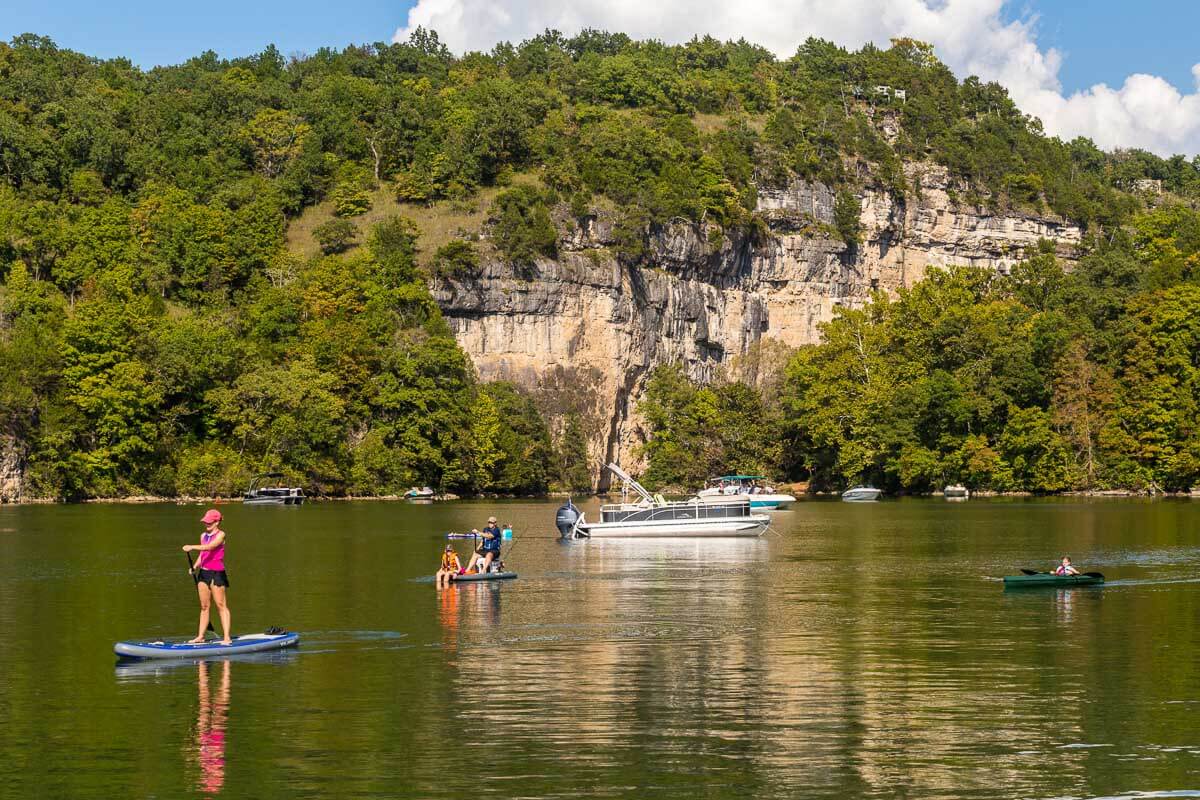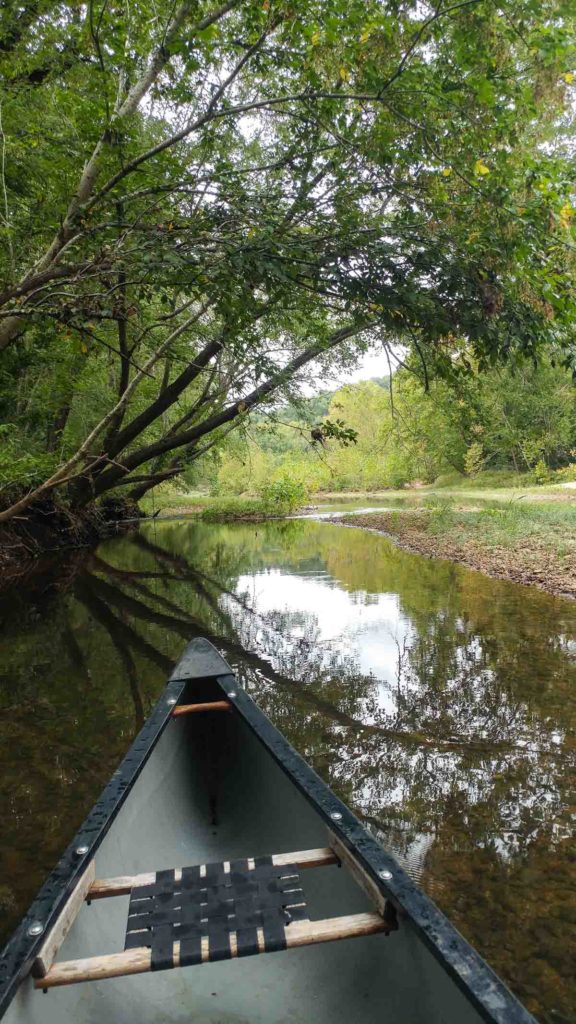We all come to Lake of the Ozarks for the same reason: to enjoy being on the water. Whether it is coving out, bar hopping, or just a long boat ride, for us boat lovers you almost can’t beat a good day on the Lake.
But let’s face it, the Lake can be a busy place, and sometimes we crave something a little more laid back. Want to feel a little closer to nature? Listen to the sounds of running water, hear the birds chirping? Ditch the engine and grab a paddle!

photo courtesy Lake of the Ozarks CVB
Now, the Lake of the Ozarks is a powerboating haven, so not every place is suitable for a paddling excursion. Coves and shorelines can often be a great place to enjoy kayaking or canoeing; especially during the busy summer boating season, it’s prudent not to contend with weekend water traffic. However, Ha Ha Tonka cove is a favorite paddling spot year-round, and as the summer vacation boating quickly dies down, the Lake grows suddenly calm: perfect for paddlers. But there are some spots in the Lake area where canoes, kayaks and paddleboards are actually the preferred mode of transportation. Here are a couple of my favorites.
1. The Big Niangua River Trail

photo by Mike Kircher
The first is what the Osage Indians called the Big Niangua River, which means Big Winding Stream of Many Springs. This is the river that forms the Big Niangua Arm of Lake of the Ozarks. The Big Niangua offers great paddling south of here near Bennett Springs, and there are plenty of outfitters to take care of you. But there’s a way to enjoy a Big Niangua float closer to home—if “home” is the Lake. As a way to create more awareness of this beautiful river, the Lake Ozark Master Naturalists, with help from Lake Ozark Watershed Alliance, Ameren Missouri, Missouri Department of Conservation, and Missouri State Parks, have created the Big Niangua River Trail. This 13.3 mile float starts at Whistle Bridge and ends at Ha Ha Tonka State Park.
The trail is a self-guided tour of historic features and landmarks. Each stop is marked by a sign with a letter, A through T. A few of my favorite spots…
-Letters Q — Flat Rock Hole — and R — Nettie Hole — are both fishing holes that locals may wish had not been published!
-Two of the stops, L — Tie Bank — and G — Roofener Chute — are historic from the late 1800s and early 1900s as settlers cut timber for railroad ties…
There’s more to this story! Click to create a free account or sign in keep reading.
